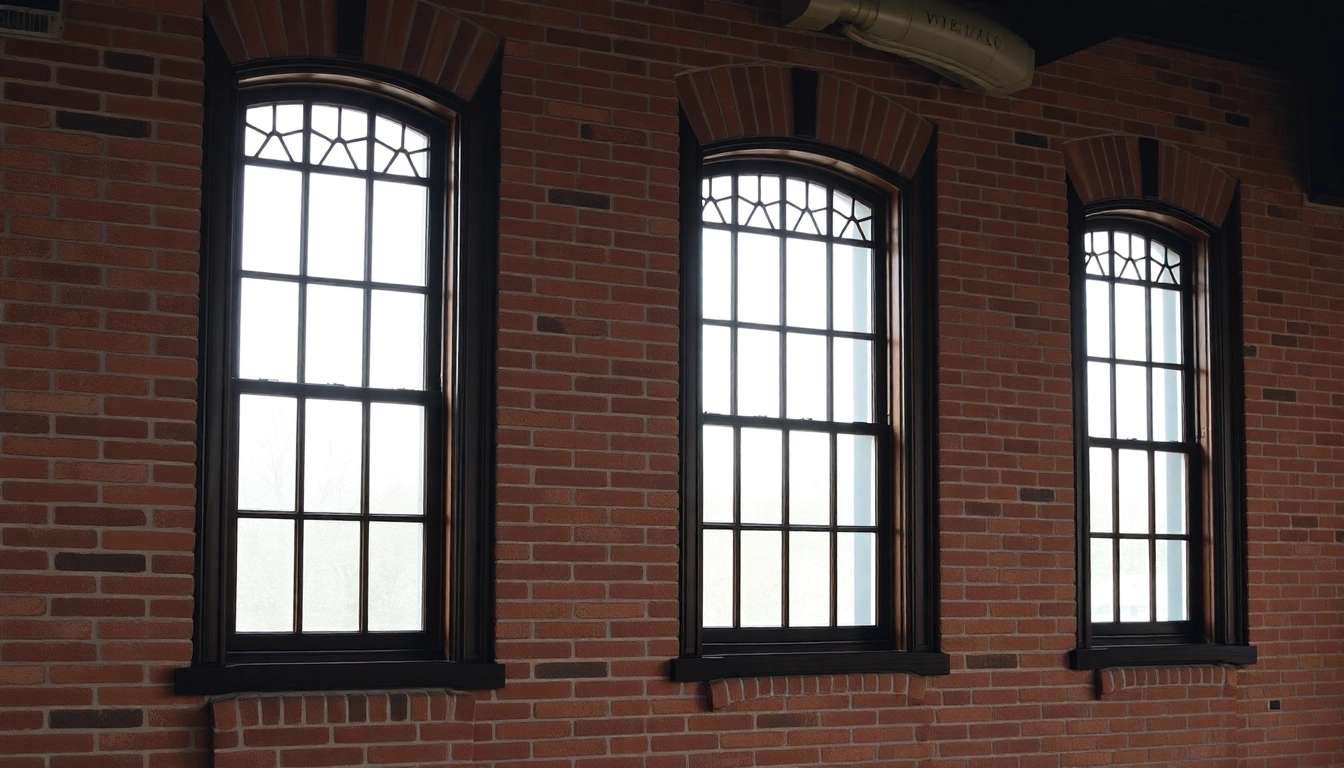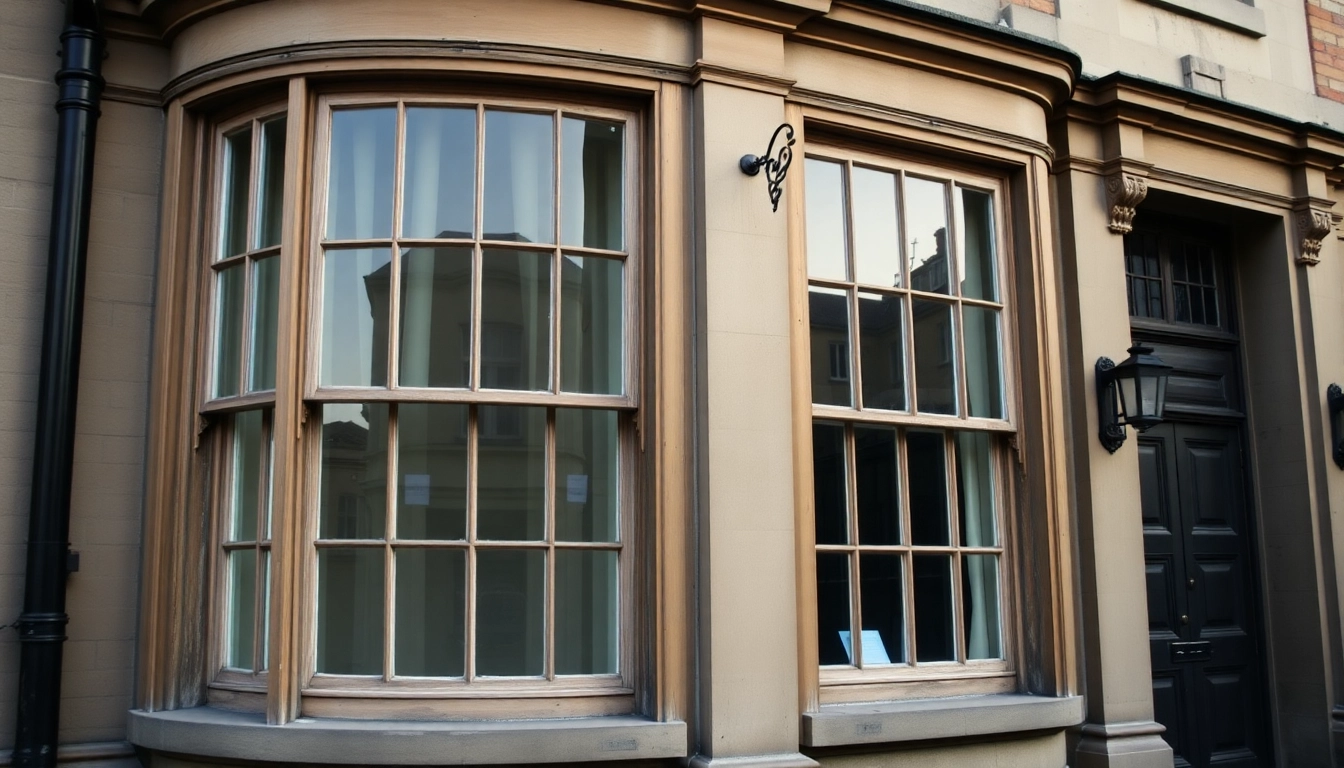Understanding Regulations and Compliance for Listed Building Sash Windows
Legal requirements for listed building renovations
Renovating or installing Listed building sash windows involves navigating a complex web of legal requirements designed to preserve the historical integrity of heritage properties. In the UK, listed buildings are protected under legislation such as the Planning (Listed Buildings and Conservation Areas) Act 1990, which mandates strict controls over modifications that can impact the character of these structures. Any work that affects the exterior appearance, structure, or interior features may require formal consent—called Listed Building Consent—before proceeding.
These regulations aim to balance the need for modern amenities and energy efficiency with the preservation of architectural heritage. For example, replacing original sash windows with modern alternatives without appropriate approval can lead to legal repercussions, including fines or demands to restore the original features. Therefore, understanding and complying with these legal frameworks is crucial for property owners and contractors to avoid unintended breaches and ensure the longevity of the property’s heritage value.
Additionally, local planning authorities often have supplementary policies tailored to conservation areas or specific heritage classifications. These may include restrictions on certain materials, window styles, or glazing techniques. Engaging early with heritage consultants or conservation officers can clarify precise requirements, facilitate smoother approval processes, and ensure that all work aligns with statutory obligations.
Planning permission process for sash window replacements
Securing planning permission for replacing sash windows in a listed building is a nuanced process that requires thorough preparation. The process typically involves submitting detailed application documentation to the local authority, demonstrating how the proposed work respects the building’s historic character. Crucial components include detailed drawings, material specifications, and demonstrate how the new windows will blend with the original architecture.
One key document is the Heritage Impact Assessment, which assesses how the modifications affect the building’s historical significance. For example, when proposing double-glazed sash windows, it’s vital to specify period-appropriate designs and materials that satisfy conservation standards.
It’s advisable to consult with heritage professionals before application submission to ensure that design proposals meet the criteria. Once approved, work can commence under specified conditions, often requiring inspections and adherence to detailed execution plans.
Some common pitfalls include underestimating the documentation required or opting for modern materials that do not align with heritage standards. Proper planning and proactive communication with authorities streamline the process and prevent delays or refusals.
Design considerations to meet heritage standards
Designing sash windows for listed buildings necessitates adherence to traditional aesthetics while sometimes incorporating modern enhancements cautiously. Key design considerations include maintaining original proportions, replicate sash-hardware details, and selecting authentic materials. The frames, sash cords, and glazing bars should mirror historical craftsmanship.
Heritage standards often mandate that windows can be opened and operated sympathetically to their original functionality, preserving the building’s character. For instance, the use of double-hung sash configurations that mirror Georgian or Victorian styles ensures compatibility. Additionally, features like putty lines, raised or weighted sash designs, and authentic finishes play critical roles in aligning with conservation requirements.
When integrating new technologies such as secondary glazing or draught-proofing, it is essential to select solutions that do not compromise the visual or structural integrity of the original windows. For example, using slim-profile double-glazing units that fit within existing sash frames preserves the external appearance while improving energy efficiency.
Professional consultation and adhered-to standards, such as those outlined by Historic England, ensure that designs uphold both aesthetic authenticity and functional longevity.
Restoration vs. Replacement: Best Practices for Listed Building Sash Windows
When to restore your original sash windows
Restoration is often the preferred approach for listed buildings due to its preservation of historical integrity. Restoring involves repairing, re-glazing, and upgrading existing sash windows rather than replacing them outright. This option is particularly suitable when windows are structurally sound but suffer from issues such as draughts, rot, or broken mechanisms.
An effective restoration process typically includes meticulous cleaning, re-glazing with period-appropriate glass, and refurbishing sash cords and weights. For example, reglazing with slim-profile double-glazed units can significantly boost thermal efficiency while maintaining the window’s authentic appearance.
The benefits of restoration extend beyond heritage conservation—they often provide long-term cost savings and reduce environmental impact by reusing existing materials. Moreover, restorations can be tailored to improve energy performance without compromising aesthetic or historic features.
However, some issues like extensive wood rot or misaligned sashes may demand more involved repairs or partial replacements. Engaging specialists with experience in heritage window restoration ensures compliance and optimal results.
Choosing authentic materials and craftsmanship
Authenticity in materials and craftsmanship is vital for both the visual appeal and legal compliance of sash window restoration or replacement. Traditional timber, such as timber from sustainably managed forests, remains the gold standard because of its durability, aesthetic compatibility, and ability to age gracefully.
Craftsmanship should reflect traditional woodworking techniques, including hand-crafted joints, period-specific hardware, and finishes that replicate historic paint and stain patterns. These elements reinforce a sense of authenticity that heritage bodies and conservation officers expect.
For instance, using traditional putty glazing, collaborating with skilled joiners, and sourcing period-look hardware reinforce the historical accuracy of restored windows. The quality of craftsmanship influences not only the visual authenticity but also the structural longevity of the windows.
Advances in materials, like modern oak or carefully formulated paints, have expanded options without sacrificing authenticity. Nonetheless, careful selection aligned with conservation guidelines is essential to maintain heritage integrity.
Retrofitting with modern energy-efficient solutions
Modern energy efficiency standards can be achieved through retrofitting, which combines conservation with sustainability. Secondary glazing, draught-proofing, and double-glazing are common retrofit solutions that significantly improve thermal performance without altering the original appearance.
For example, installing slim-profile double glazed units within existing sash frames maintains the visual aesthetics while enhancing insulation. Draught-proofing, via high-quality seals, reduces heat loss and improves comfort.
These retrofitting practices should be carried out under expert guidance, adhering to heritage regulations. Specialist manufacturers often produce bespoke solutions tailored for listed buildings, ensuring minimal impact on the historic fabric.
Case studies have shown that well-executed retrofits can cut energy bills by up to 30% or more, demonstrating practical benefits alongside heritage preservation.
Styles and Materials for Listed Building Sash Windows
Traditional timber sash window designs
Traditional timber sash windows epitomize the historic aesthetic of many UK heritage buildings. These windows are characterized by their vertical sliding sashes, multiple glazing bars, and finely crafted hardware. Popular styles include Georgian, Victorian, and Edwardian designs, each with distinctive proportions and detailing.
Georgian sash windows typically feature six-over-six panes, while Victorian styles often have more ornate features like sash horns, thicker glazing bars, and decorative mouldings. Selecting the appropriate style enhances the authenticity and visual harmony of the building.
Modern reproductions can replicate these styles exactly, with some manufacturers offering bespoke options to match historical specifications, ensuring that restorations or replacements are visually seamless.
Double glazing options for heritage compliance
Double glazing, once considered incompatible with heritage properties, now offers a range of solutions that fulfill conservation standards. Slim-profile double glazed units are designed to fit within existing sash frames or be integrated discreetly, providing thermal benefits without compromising appearance.
These units typically feature low-emissivity coatings and advanced sealing technologies, vastly improving energy efficiency and reducing noise pollution. When specifying double glazing, it’s essential to choose options that match the building’s historic character, such as true-divided lights or custom grille patterns.
Working with suppliers familiar with conservation requirements ensures that the double-glazed units are both compliant and unobtrusive.
Alternative materials like uPVC and composite for conservation areas
While timber remains the ideal material for listed buildings, uPVC and composite materials can be suitable alternatives in specific contexts, particularly in conservation areas with less strict classifications or where long-term maintenance is a priority. Modern uPVC sash windows can be engineered to mimic traditional profiles, with textured finishes, authentic hardware, and color options designed to blend seamlessly.
These materials offer advantages such as improved weather resistance, minimal maintenance, and cost-effectiveness. However, it is vital to obtain appropriate planning permissions and ensure that the chosen materials adhere to conservation standards.
Consulting with heritage professionals before installation helps confirm that the alternative materials meet the necessary criteria without adversely affecting the building’s historic significance.
Cost, Funding, and Grants for Listed Building Sash Windows
Estimating costs of restoration and new installations
The cost of restoring or installing Listed building sash windows varies widely depending on scope, materials, and complexity. Restoration typically ranges from £2,500 to £8,000 per window, encompassing repairs, draught-proofing, and refinishing.
Replacement with bespoke timber sash windows can cost upwards of £10,000 each, especially when involving intricate detailing and high-quality materials. Double-glazing upgrades might add an extra £2,000–£4,000 per window.
Budgeting must also consider associated costs such as planning permissions, specialist craftsmanship, and ongoing maintenance. Conducting detailed quotes from experienced heritage window specialists is essential for accurate planning.
Financial assistance and planning grants
Various grants and financial schemes support the preservation of heritage properties, including measures related to sash windows. In England, schemes like the Heritage Lottery Fund, local authority conservation grants, and specific listed building grants can offset some costs, especially for restoration work that complies with heritage standards.
Applying for these grants requires demonstrating the project’s heritage value and adherence to conservation principles. Partnering with heritage organizations or conservation advisory services can improve application success rates.
Additionally, tax incentives, such as the Listed Buildings Capital Allowance, may be available depending on the nature of the works and property ownership.
Choosing qualified installers and ensuring quality work
Quality workmanship is critical for both aesthetic and regulatory reasons when working on listed building sash windows. Selecting installers with proven experience in heritage properties ensures compliance with regulations and longevity of the work.
Certification from bodies such as the Heritage Skills Alliance or membership in conservation specialist associations signals competence. Always request case studies and references, and verify that the installation team understands the specific constraints of listed buildings.
Proper supervision and clear contractual specifications further safeguard that work meets high standards and regulatory approval.
Maintaining and Upgrading Listed Building Sash Windows
Regular maintenance to preserve historic integrity
Maintenance is vital for prolonging the lifespan of sash windows in heritage properties. Regular inspections should focus on checking for signs of rot, damage, or hardware failure. Cleaning frames, lubricating moving parts, and repainting with period-appropriate finishes help sustain their appearance and function.
Preventive care avoids costly repairs and preserves the aesthetic and structural qualities that heritage bodies value. Using only compatible products and techniques ensures that the windows remain in character.
Overhauling and draught-proofing techniques
Overhauling involves stripping sash windows to their components, repairing or replacing damaged parts, and reassembling with care. Draught-proofing is a vital upgrade, significantly reducing heat loss and noise infiltration.
Modern draught-proofing solutions, such as bespoke seals and brush strips, can be applied discretely without detracting from the historical appearance. Overhaul programs typically include removing sashes, repairing frames, re-glazing with authentic or double-glazed units, and ensuring smooth operation.
These techniques should be carried out by specialists familiar with conservation principles to avoid compromising the windows’ heritage value.
Future-proofing with period-appropriate upgrades
As energy standards evolve, future-proofing sash windows involves integrating modern enhancements compatible with heritage conservation. Innovations such as internally glazed units, high-performance insulation, and discreet weather seals offer improvements in efficiency.
Strategic planning ensures that upgrades do not harm the building’s character. For example, incorporating secondary glazing treatments that replicate the appearance of original glazing preserves visual integrity while delivering energy savings.
Regular assessments and upgrades aligned with conservation guidelines help conserve both the building and its historic significance over the long term.

